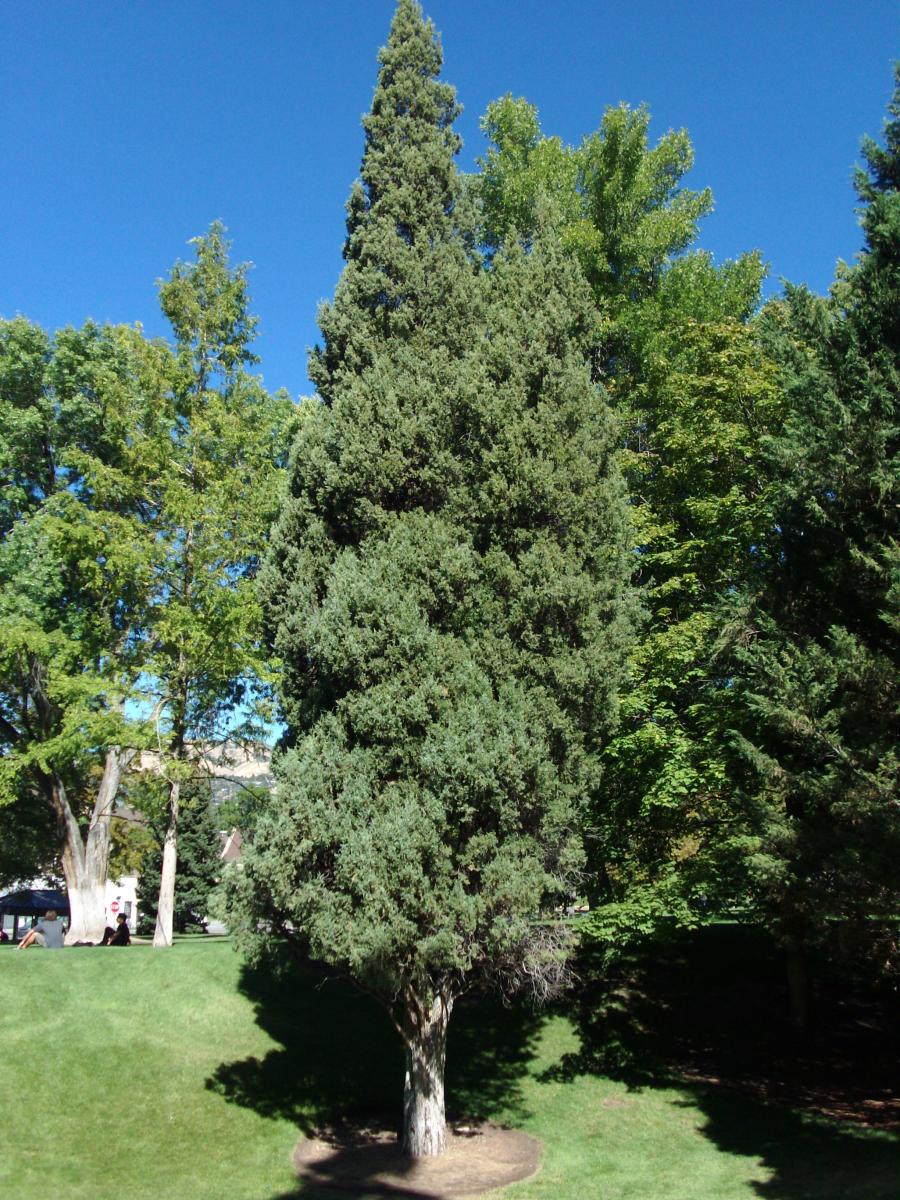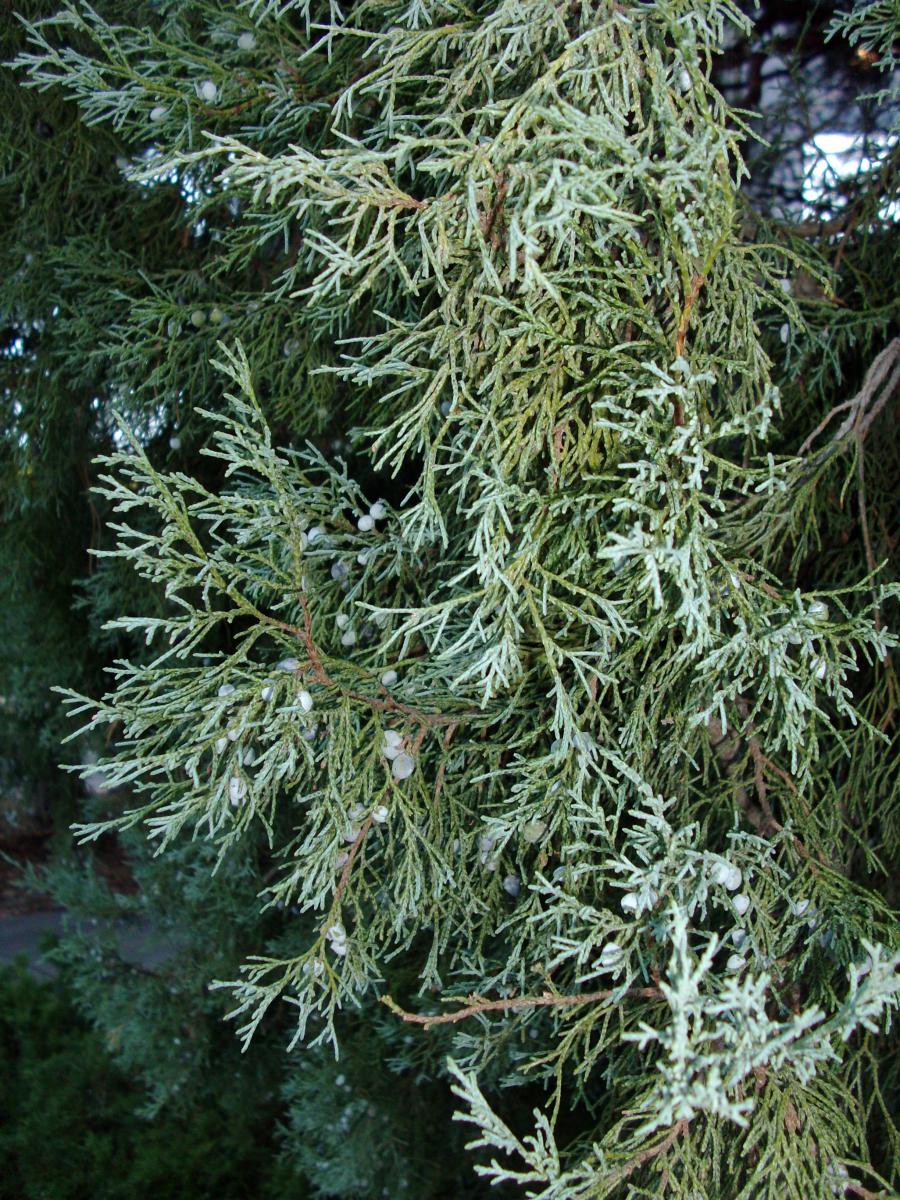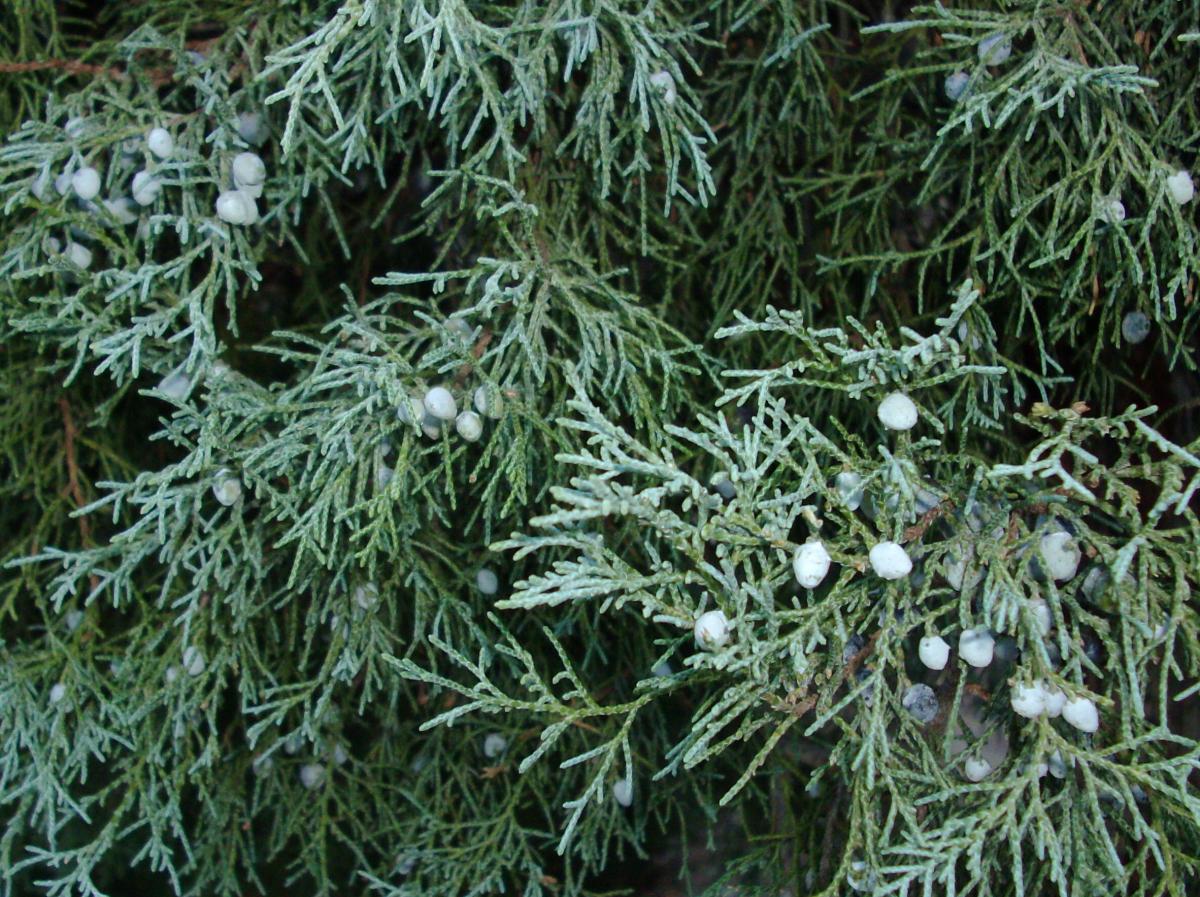Rocky Mountain Juniper




Juniperus scopulorum
Leaves: Evergreen. Scale-like leaves tightly pressed close to the twig. Dark green to light blue-green color.
Bark/Twigs: Reddish brown or gray colored bark. Very fibrous and peels off in narrow strips.
Flowers/Fruit: Produces dark blue berries ¼ to ⅓ inch in diameter that ripen into brownish triangular cones.
Mature size and shape: Medium to medium large. 30 to 40 feet high x 3 to 15 feet wide. Narrow, pyramidal shaped tree, often with several main stems. Growth habit opens with age.
General information/special features: Plant in full sun. Prefers well drained soil. Lives on rocky ridges in its native habitat. Withstands drought very well. Juniper is a main component of gin. Not all types of Juniper berries are edible.
Landscape use and maintenance: Native to Utah. Good tree for screening or as a background tree. Slow growing rate. Low maintenance. One particular specimen, the Jardine Juniper, is the National champion, 40 feet by 21 feet in Cache National Forest, Utah, and is thought to be over 2,000 years old.
USDA Hardiness Zone: 4 to 9
Family/Origin: Cupressaceae – Cypress. Occurs naturally from the western Great Plains throughout the Rocky Mountains and southwestern Canada, including Utah.
Campus Use: Somewhat common. Can be found east of the William Stewart Building (Bld 6).
